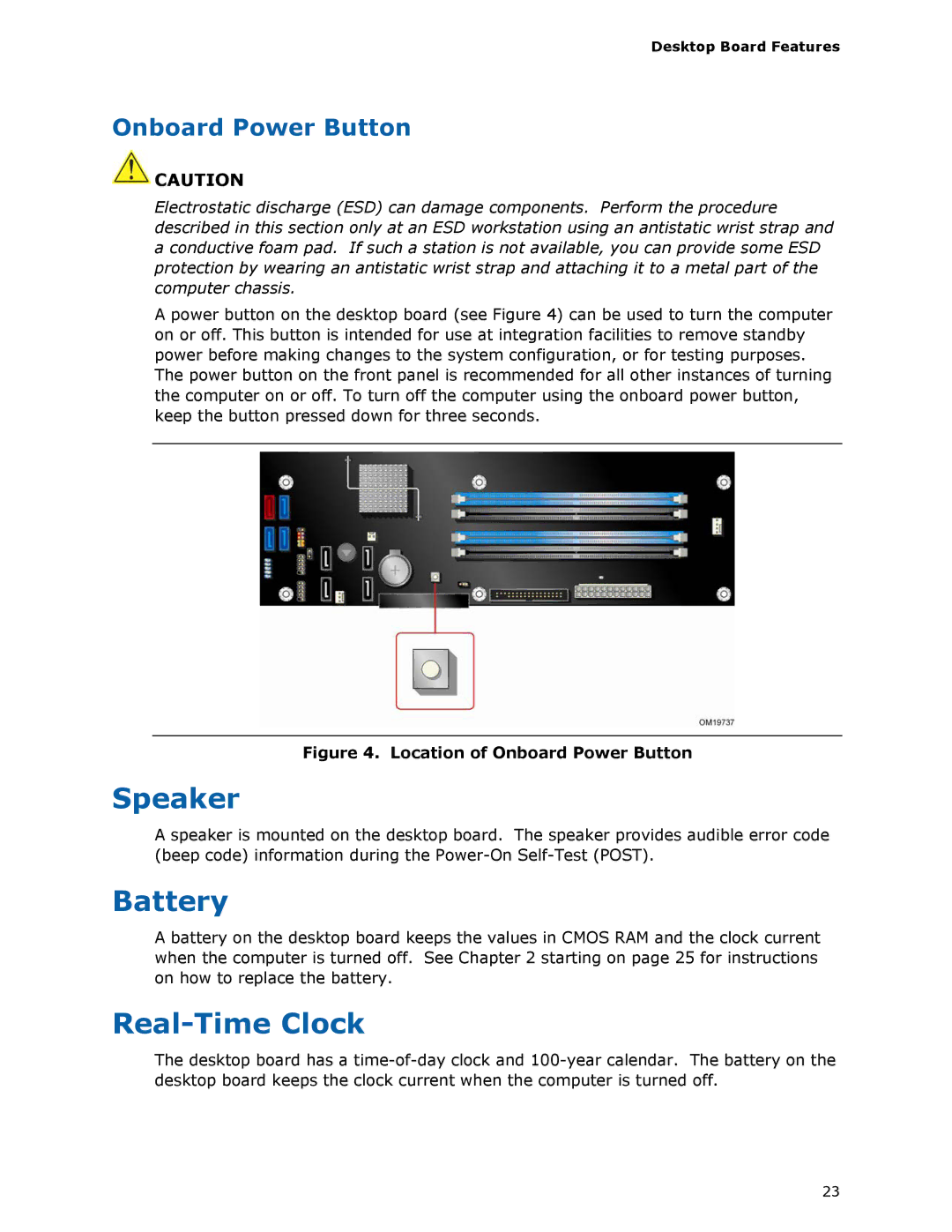
Desktop Board Features
Onboard Power Button
![]() CAUTION
CAUTION
Electrostatic discharge (ESD) can damage components. Perform the procedure described in this section only at an ESD workstation using an antistatic wrist strap and a conductive foam pad. If such a station is not available, you can provide some ESD protection by wearing an antistatic wrist strap and attaching it to a metal part of the computer chassis.
A power button on the desktop board (see Figure 4) can be used to turn the computer on or off. This button is intended for use at integration facilities to remove standby power before making changes to the system configuration, or for testing purposes. The power button on the front panel is recommended for all other instances of turning the computer on or off. To turn off the computer using the onboard power button, keep the button pressed down for three seconds.
Figure 4. Location of Onboard Power Button
Speaker
A speaker is mounted on the desktop board. The speaker provides audible error code (beep code) information during the
Battery
A battery on the desktop board keeps the values in CMOS RAM and the clock current when the computer is turned off. See Chapter 2 starting on page 25 for instructions on how to replace the battery.
Real-Time Clock
The desktop board has a
23
